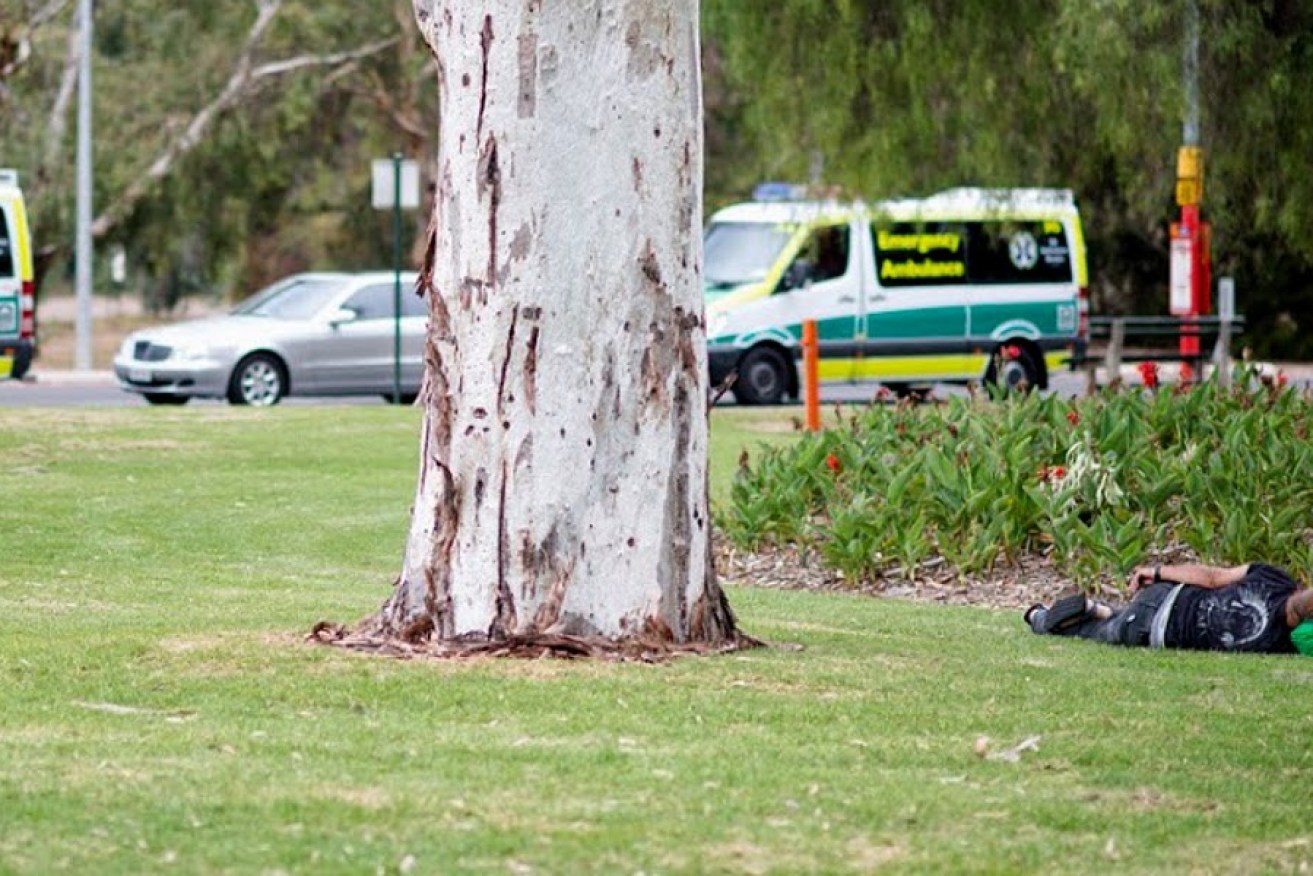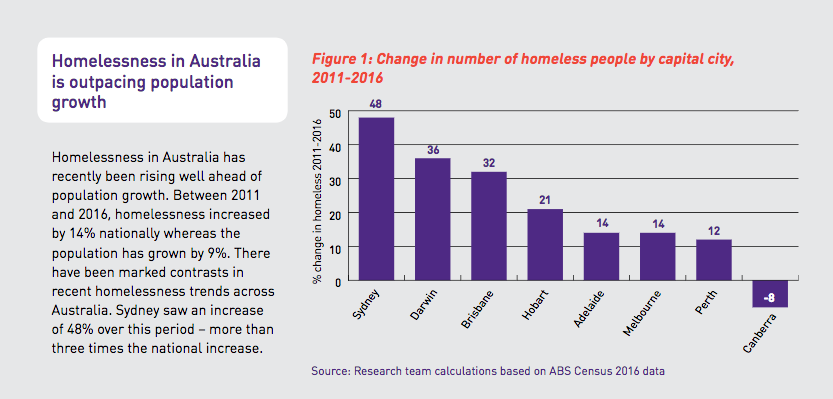Surge in Australian homelessness a “national disgrace”
For years, Helen had nowhere to go. She slept on couches, in crisis accommodation and rooming houses, but rarely felt safe.

Photo: Nat Rogers/InDaily
Like tens of thousands of Australians, a lack of affordable housing options left the 54-year-old at risk of falling through the cracks, and in what’s been described as a “national disgrace”, experts warn there is no quick fix to a growing problem for more and more vulnerable people.
“(At) one of the rooming houses, the ceiling collapses in the front door … and then I was moved to another one, and I was away for a weekend and someone had broken in and slept in my bed and ate my food,” said Helen, who preferred not to use her surname.
“Some places I was terrified because I’ve been told stories like ‘don’t go into the kitchen cooking meals because you might get held up with a syringe’.
“I was just in fear constantly.”
Eventually, Helen secured a place in social housing, a one-bedroom townhouse, which “gives me the luxury to come and go as I please”.
But not everyone is so lucky, Launch Housing chief executive Tony Keenan says.
His organisation has established a national homelessness monitor, based on a similar study in the UK, in a bid to tackle the “national disgrace”.
“We’re dealing with a combination of big population growth, (a) massive increase in housing costs, a decline in social housing and you don’t have to be very good at maths to work out what’s going to happen with that,” Keenan said.
“The problem does seem very big, but it’s not acceptable to throw your hands up in the air and say nothing can be done.”
Census data shows homelessness increased by 14 per cent and rough sleeping by 20 per cent in Australia between 2011 and 2016.
Instances of severe overcrowding, where people live in dwellings with at least four fewer bedrooms than required, grew by 23 per cent over the same period.
Sydney is the capital of the country’s homelessness crisis, with the problem increasing by 48 per cent over the five years. This was followed by a 32 per cent jump in Brisbane and a 22 per cent rise in Melbourne. Adelaide’s rate grew by the national average – 14 per cent.
The main factors are poverty, domestic violence, the high cost of housing and social welfare payments that cannot keep up with living expenses.

Taken from the Launch Housing Homelessness Monitor.
Keenan said significant investments in social housing and an expansion of outreach programs for rough sleepers are needed to tackle homelessness.
“Since the 1990s, governments have allowed public housing levels to dwindle to alarming levels and now that they want to fix it, they can’t fix it quickly due to years of inaction,” he said.
Social housing has given Helen the space to try and work through her trauma and rebuild her life and she wants other people to get the same chance.
“There needs to be more social housing … and the second thing is getting support when they get the housing.”
Data taken from the 2018 Australian Homelessness Monitor.
– with AAP




